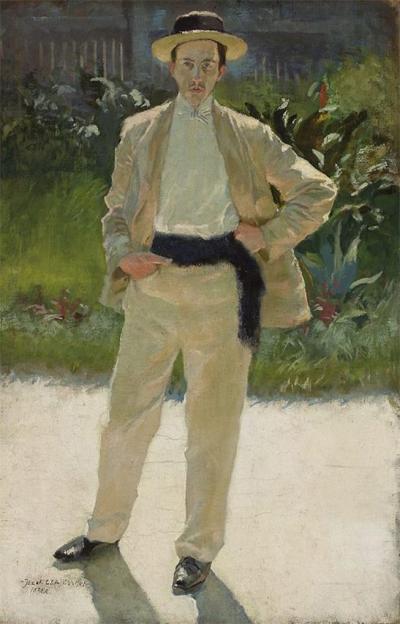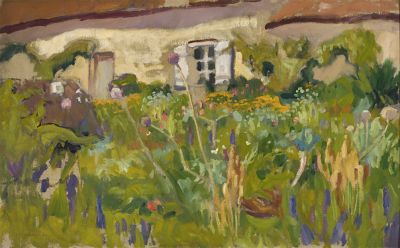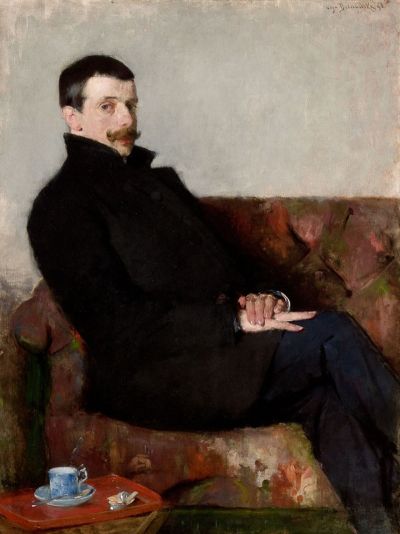Czajkowski, Józef

Czajkowski, Józef, Polish painter and architect, member of the “Munich School”. 1892-95: student at the Academy of Fine Arts in Munich. *21.1.1872 Warsaw, †27.7.1947 ibid. Brother of the painter, Stanisław Jan Maurycy Czajkowski (1878-1954). On the 2.11.1892 he enrols in the nature class at the Royal Academy of Fine Arts in Munich, studies under Johann Caspar Herterich (1843-1905), Ludwig Herterich (1856-1932) and Carl von Marr (1858-1936). Subsequently he studies in Paris at the Académie Julian under Jean-Paul Laurens (1838-1921), Jean-Joseph Benjamin-Constant (1845-1902) and James Abbott McNeill Whistler (1834-1903); and at the Vienna School of Arts and Crafts. 1894/95: at the Academy of Fine Arts in Cracow/Akademia Sztuk Pięknych w Krakowie and at the Cracow Technical College. From 1898: his brother Stanisław Jan Maurycy studies at the Munich Academy in the nature class given by Johann Caspar Herterich. From 1901: member of the artists’ association Sztuka; Co-founder of the Polish Society of Applied Arts/Towarzystwo Polska Sztuka Stosowana, whose aim is to integrate folk art and crafts with the fine arts. From 1906: active as an architect. 1910: 1st Prize for his Plan to Regulate and Develop Greater Cracow. 1913: founder of the faculty of architecture at the Cracow Academy; Chair of Interior Architecture till 1919. From 1914: member of the Union of Cracow Workshops/Warsztaty Krakowskie, which he co-heads with Karol Stryjeński (1887-1932) during the First World War. At the same time Czajkowski is one of the most important designers in the Polski Kilim workshops for carpets and wall hangings in Cracow. 1919-22: Professor of Painting and Applied Art at the Faculty of Fine Arts in the University of Vilnius. 1922-38: Professor of Interior Architecture at the Warsaw Academy. 1926: co-founder of the Ład (English. Management) Artists’ Cooperative/Spółdzielnia Artystów Ład. Czajkowski paints rural scenes, landscapes and portraits in the style of open-air painting and brightly-coloured impressionism. In addition he creates drawings, chalk and pastel sketches, black-and-white and coloured lithographs (a folder on the Doctors’ Congress in Cracow, 1911), posters, illustrations and vignettes. His designs of buildings and interiors follow a country house style, contemporary Art Deco and later decorative expressionism. His façade for the former industrial museum in Cracow (1908, created with Wojciech Jastrzęmbowski) is a moderate Jugendstil design based on the ideas of the Vienna architect, Otto Wagner (1841-1918). His furniture is made of solid, selected materials and has a high functional value (the dining room at the exhibition of Polish applied art, Zachęta, in Warsaw, 1908). In the mid-1920s his interior designs and sketches of furniture link elements of folk art with those of expressionism (the Polish Pavilion at the Exposition Internationale des Art Décoratifs et Industriels Modernes, Paris 1925). His designs for kilims draw on folk art motifs. They are made of high-quality material (coarsely woven wool), in lively colours made from vegetable pigments. His works can be found in the national museums in Cracow and Warsaw, amongst others.



